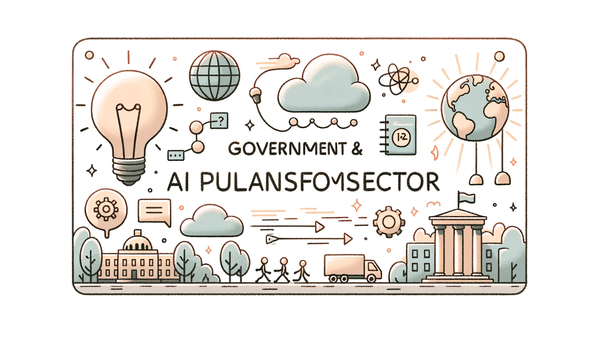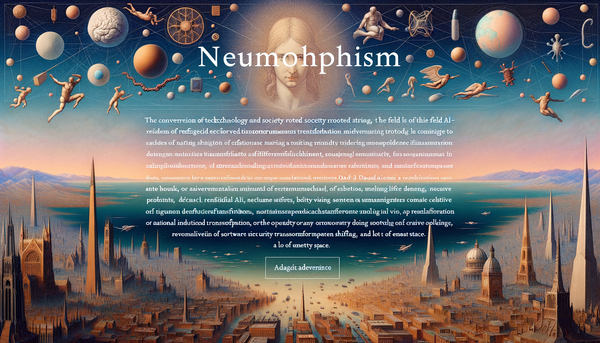Shocking AI Incident and Future of Technology Investments

Artificial intelligence is transforming strategic business models and digital experiences—from robust AI readiness frameworks to revolutionary browser innovations and massive investments redefining the tech landscape. In a world where some claim that a fake AI video of political figures blurred the line between satire and reality, forward-thinking companies are also harnessing AI to find untapped customers and pivot business operations.
Building a Future-Ready Organization with AI Readiness Frameworks
One of the most crucial challenges for companies today is developing an effective framework for AI readiness. As detailed in an insightful piece on EdSurge, the journey toward AI adoption begins by understanding both existing technological capabilities and strategic business needs. Creating an AI readiness framework involves mapping out processes, assessing infrastructure, garnering talent, and ensuring data governance is up to scratch.
Organizations must reflect on how to integrate AI into daily operations without compromising the workflow established over years. This means not only investing in technology but also nurturing a culture that embraces change and experimentation. Taking a methodical approach—similar to designing a robust architectural framework for a building—ensures that every digital transformation effort is both scalable and secure.
It’s important here to cross-check with industry analyses on AI innovations to understand how startups are rethinking traditional business paradigms. For instance, many tech leaders advocate early-stage investments in digital upskilling and pivoting to more AI-centric business models, as discussed by many influential thinkers in the field.
In my experience, successful transformation often hinges on the willingness to reassess old processes and experiment with new ideas. This concept resonates with the adage that “change is the only constant”, and in the fast-moving world of AI, it is more accurate than ever.
Innovative Strategies: Finding Customers and Revamping Business Models
Steve Blank’s perspective, as reported in a recent Inc. article, brings forward an invigorating idea—using AI not merely as an operational tool but as a major contributor to redefining where customers are and how businesses can evolve their models. This view positions AI as a central pillar in customer discovery and iterative innovation.
By analyzing customer behavior and market dynamics through AI algorithms, companies can shift from reactive models to proactive strategies. This shift means understanding customer needs even before they articulate them, predicting trends, and swiftly adapting to new competition. One might say that with AI, your business model is no longer static but a living organism constantly learning and adapting.
The method entails a dance between data and intuition—a balancing act reminiscent of the creativity of a jazz musician who improvises while staying within the bounds of a melody. AI can facilitate this by identifying latent patterns in customer behavior that are otherwise invisible, leading to improved decision-making processes and more effective product positioning.
For further insights on how technology is shaping the business landscape, you can explore discussions on consumer behavior and corporate investments available on our website, which underscore the increasing trust consumers place in AI-driven solutions.
The Complex World of Digital Misinformation: Fake AI Videos and Their Impact
The digital era has witnessed unprecedented levels of content manipulation, and a couple of recent incidents serve as a stark reminder. News outlets like The Independent and Zeteo reported on AI-generated videos circulating among federal computers—one showing former political figures in bizarre, fictional scenarios such as Trump kissing or even licking Elon Musk's toes. These events, though clearly staged in the eyes of many, reveal a concerning trend in the use of AI for fabricating stories and misinformation.
Such digital pranks raise serious questions about cybersecurity, the potential for political sabotage, and the broader implications for trust in digital media. While some dismiss these videos as “tech pranks,” they unearthed the darker side of AI: its ability to distort reality if unchecked. Therein lies a call to action for enterprises and government bodies alike to bolster their cybersecurity measures and develop rigorous standards to verify digital content authenticity.
"Artificial intelligence is not a substitute for natural intelligence, but a powerful tool to augment human capabilities." – Fei-Fei Li
Balancing the scales of innovation and security is a task that requires both technical vigilance and robust regulatory frameworks. It is evident that while AI holds promise, it also carries risks—risks that are best managed through transparency, public dialogue, and the collaborative effort of diverse stakeholders.
This topic connects seamlessly to our discussions on digital ethics and the unforeseen consequences of fast-tracked technological advancements. Our coverage on the intersection of AI and digital politics goes deeper into how such phenomena are occurring and what it implies for both the public and private sectors.
Revolutionizing the Digital Experience: AI in Web Browsing
AI has long been associated with backend operations and data-heavy applications; however, its reach is extending into everyday digital interactions, such as web browsing. Recently, Perplexity, a company already known for natural-language search capabilities, announced its foray into web browsing with a product called Comet. The concept of AI-infused browsing has raised eyebrows in a market long dominated by established players like Chrome from Google.
In an announcement relayed through social media, Perplexity invited beta testers to experience what appears to be a new era in web navigation. Although details remain under wraps, the promise of a browser that could potentially interpret user intent more effectively, organize online data in real-time and let users interact in more intuitive ways is certainly tantalizing.
The competitive landscape is daunting. Rivals such as The Browser Company’s Dia are also offering natural language-based interactions. Yet, history tells us that disruption often emerges from unconventional thinking. Much like how early voice assistants transformed the way people interact with devices, an AI-powered browser might redefine how we perceive and use the web by simplifying and contextualizing our daily digital interactions.
Interested readers might explore additional analysis on our website in recent articles discussing AI-generated content and its broader societal impacts to see how such innovations could ripple across various sectors.
Apple’s Monumental AI Investment: A Leap Towards American Innovation
In a demonstration of confidence in American innovation, Apple’s recent announcement to invest over $500 billion in the United States over the next four years is reshaping the national tech landscape. With the creation of approximately 20,000 new jobs and a dedicated manufacturing facility in Houston aimed at producing servers for Apple Intelligence, this commitment highlights not just financial solidity but also a visionary emphasis on integrated AI and machine learning solutions.
The expansion isn’t limited to just one state. Apple’s planned growth of its data centers across North Carolina, Iowa, Oregon, Arizona, and Nevada signals a broader strategy, paving the way for smarter infrastructure required to handle increasingly complex AI models and data analytics tasks. By also opening an Apple Manufacturing Academy in Detroit, the company is setting the stage to educate and empower smaller enterprises and innovators in smart manufacturing.
This massive commitment is emblematic of the transformative initiatives that Apple is undertaking, reinforcing the idea that AI is not merely a technological attribute, but a foundational aspect of modern business strategy. Such investments have the dual effect of fostering domestic innovation while concurrently upholding global competitiveness in the tech industry.
Tim Cook’s optimistic vision during his dialogue with national leaders echoes the belief that sustainable innovation is built on robust domestic growth and technological advancement. For more detailed coverage of cutting-edge developments in tech investments, readers can refer to Engadget’s coverage here.
Insights and Reflections on the AI Revolution
The rapid progress in AI has manifested in several unexpected areas—from boosting business models to reinventing everyday digital interactions, and yes, even stirring up controversies in political commentary through manipulated media content. What we see here is a convergence of technology, business strategy, and digital culture that is reshaping society at large.
I find it particularly striking how diverse applications of AI—from frameworks ensuring enterprise AI readiness to innovations like Comet—signal a future where artificial intelligence is deeply intertwined with everyday life. As one expert put it, "The pace of progress in artificial intelligence is incredibly fast." These changes compel us to remain vigilant, curious, and agile. Moreover, as we invest in the infrastructure and talent necessary for these advancements, new challenges like digital misinformation require equally innovative solutions.
It is essential to stay informed through credible sources, such as our internal discussions on AI’s impact on society and digital politics, which provide broader insights and industry benchmarks. The interplay between ethical considerations and technological progress remains a central theme, urging policymakers, researchers, and businesses alike to collaborate more intensively.
Looking back at historical industrial revolutions, we can draw parallels with how society reckoned with transformative changes. Whether it’s the assembly lines of the early 20th century or the digital revolution at the turn of the millennium, progress has always demanded adjustments in social contracts, regulatory frameworks, and ultimately, a reevaluation of how we live and work.
In many ways, today’s journey with AI is not unlike the evolution chronicled in classic literature—dramatic, unpredictable, and full of opportunities that can redefine our collective future. As we continue to explore these facets, it is imperative to balance optimism with meticulous planning, ensuring that the rise of AI ultimately augments human ingenuity and societal welfare.
Further Readings
For those interested in diving deeper into these topics, here are a few further readings:
- AI-Generated Content and Its Impact on Society & Economy
- The AI Landscape: Consumer Behavior and Corporate Innovations
- Navigating the Intersection of AI, Politics, and Finance
- Industry News on AI Innovations
- Ars Technica: Perplexity's Comet Browser
- Engadget: Apple’s $500 Billion US Investment
These pieces provide additional context to the multifaceted impact of AI on our world.
Final Highlights
AI continues to break barriers, urging both innovators and skeptics alike to engage with its rapid evolution. As businesses rethink customer acquisition, digital ethics become more pressing, and tech giants invest billions in shaping the future, artificial intelligence remains at the forefront of our technological, cultural, and economic discourse.




